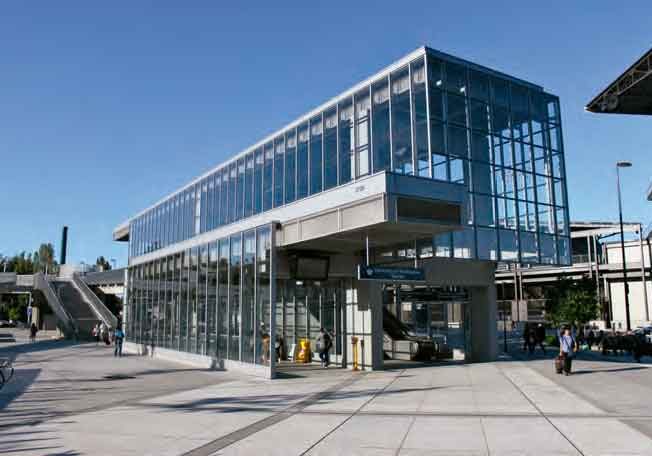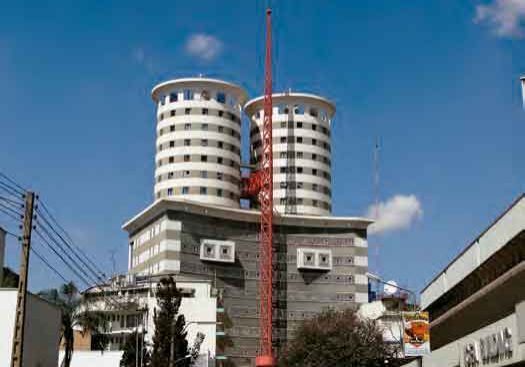Otis president offers insights into a rapidly changing labor landscape.
This article on perspectives on technology developments and their implications for the vertical-transportation industry was excerpted with permission from the author’s LinkedIn blog……………………..Editor
The technology revolution is radically transforming every aspect of our lives with enormous social and economic benefits. I’m often asked whether this revolution will leave certain workers behind. I recently participated in a panel discussion on Industry 4.0 at the IBM Think 2018 conference. We talked a lot about the disruption we’re seeing across industries, from high-tech to manufacturing to financial services. It’s true that many jobs are being transformed by Industry 4.0, shifting millions of workers into roles that require new skills, particularly in the craft and trade areas.
Technology is changing how work gets done — but it can’t replace the pride, passion, creativity and judgment that humans bring to the job. I’ve spent more than 30 years in technology industries and personally witnessed the third and now the fourth industrial revolutions. What’s different about Industry 4.0 is the pace of change — it’s exponential, rather than linear. To succeed in this environment — to be the disrupter rather than the one being disrupted — it’s critical to foster a culture that embraces change, including the changing skills our workforce needs to succeed in the new digital economy. That’s why I’m so focused on workforce development.
Foster a Culture That Promotes Collaboration and Continuous Learning
The role of the elevator mechanic at Otis is an example of how the industrial trades are becoming more advanced and increasingly digital. Our elevators today are smarter and connected — rich with data from our controllers and sensors. We’re connecting our network of over two million elevators and escalators, collecting this equipment data in real time and tying the information to smartphone apps used by our 33,000 mechanics in the field. This new digital ecosystem will help us identify potential issues before they occur, streamline repairs and minimize service disruptions to better serve our customers. This data will also form the Internet of Things (IoT) backbone that connects our customer, our passengers, our mechanics and others in new ways through new business models.
We recognized that the success of our service transformation would require a shift in how our mechanics approached their jobs, which meant training them in the use of the new technology and getting them to accept and rapidly adopt it. Our approach involved change management networks and the creation of online communities like Yammer for learning and collaboration.
We also created a “Champion Network” to support the growth of our field mechanics’ skill sets. To date, we have more than 1,000 Champions, who are helping lead the deployment and adoption of our new mobile service applications. As service ambassadors, our Champions share information and resources to educate colleagues and field users. At the same time, we integrate feedback from the field into app enhancements. This engagement helps us train teams on the tools and ensure adoption over the short and long term.
It’s not just our service colleagues who are gaining new digital skills. Otis colleagues across many functions are enhancing their digital acumen in design methodology at the United Technologies Corp. (UTC) Digital Accelerator, the digital incubator for UTC, our corporate parent. We’re developing curricula and supporting certificate programs aimed at strengthening skills in new ways of working and developing products: user-centric design, Agile, Minimally Viable Product (MVP) and rapid prototyping, among other areas.
Apprenticeship Programs and Other Educational Models
Many industries face similar challenges in bridging the skills gap. We need to raise the knowledge base and core digital skills of all students and future employees as they go from K through 12 and on to trade schools, community colleges or universities. The public and private sectors can work together to build training and education systems that are highly responsive to industry trends and employment skill needs.
I’ve written before about the importance of reskilling: A good example is Germany’s proven apprenticeship model that allows students to earn a living while they learn a vocation in a particular company. At Otis, we have established similar programs in Europe, the Middle East and Africa, and partnered with industry groups, unions and technical schools throughout the world to create innovative programs to train our next generation of mechanics.
In China, the Otis Technical Academy is collaborating with five leading technical schools and a growing network of other technical schools across the country to develop our professional service mechanics and provide hands-on training for new mechanics. In the U.S. and Canada, Otis and other industry employers partnered with the International Union of Elevator Constructors (IUEC) to establish the National Elevator Industry Education Program (NEIEP), a certified apprenticeship program to provide skills required of our elevator field technicians. UTC today invests in more than 30 workforce training programs in the U.S., including apprenticeships, community-college and high-school partnerships, and digital certificate programs.
UTC also offers a global company-paid higher-education program. It sponsors robotics competitions around the world to encourage science, technology, engineering and mathematics (STEM) interest among school-aged young people. These are great examples of what we’re doing now, but there is more to be done. In the area of external partnerships, we have great opportunities for the future. I believe that new partnerships will continue to emerge with different, nontraditional participants and digital initiatives. We look forward to engaging in partnership opportunities that benefit all communities.
Seek Diverse Experience to Maximize Knowledge Transfer
Digital skills are not exclusive to digital natives, and hiring younger workers is not a comprehensive solution to the skills gap. To nurture an environment of learning, we need to take advantage of our diverse strengths and make the sharing of knowledge a priority. Our more experienced colleagues can pass on their years of institutional knowledge and deep domain expertise to the next generation of mechanics. At the same time, they can benefit from the digital problem-solving skills and tools of their younger colleagues. Collaboration is the key, and it works both ways!
Embracing Change
I see a bright future for skilled trade workers in this technology revolution, although I understand the sense of apprehension about the changes brought by Industry 4.0. Change is inherently positive, but it poses challenges for people in any organization. Continuous learning is foundational in an enterprise to facilitate these changes. So, a leader needs to focus on people and change management to successfully guide colleagues in the organization from the past to the future. In our digital economy, that includes building a bridge over the skills gap that people can confidently cross.
Balancing Connection and Connectivity: Building Customer Trust
New technology is more personalized to suit the way people want to shop. It empowers customers with instant information. It removes inefficiencies, collects and analyzes data, and helps you understand your customers to serve them better.
The biggest difference in customer service across many industries is that there are fewer face-to-face interactions. That tends to make some people uneasy, because it feels like a loss of personalized service. But, I disagree. I believe technology makes personalization stronger and in-person interactions more valuable. The key is applying technology and reducing that data to action, which can drive the customer experience of today and tomorrow.
To meet these changes and promote stronger connections at Otis, our service approach has evolved with new technology. Still, commitment must come first. I’ve always believed people do business with people, regardless of the size of a deal or experience.
Otis has tremendous reach, but what I have witnessed is the depth of local commitment. With over 1,000 branches across approximately 200 countries and territories, Otis service teams are the nucleus of hundreds of thousands of customer relationships, including over 100,000 visits on a daily basis globally. In fact, the mechanics I meet in the field often reference the building they service not by its name or address, but as “my building.”
Today, our challenge is applying technology to facilitate this kind of personal engagement to be more effective, safer, efficient and valuable for our customers in a world exploding with data. So, as we evolve the way we provide customer service through technology, we remain focused on the people we serve. What are their needs and pain points? What are they looking for, and what is each step it takes for them to get there?
To improve the customer journey, we’re aligning every touchpoint in a single ecosystem to better meet their needs. Maintenance history, account details and more will be managed in real time. So, when customers ask about a support issue, we can confidently provide solutions that are transparent and accurate up to the minute. This same information will be tied to apps used by mechanics remotely in the field. Instead of receiving a service call and arriving with no information, mechanics will be notified about the issue and parts needed before setting foot in the building. Even better, we will enable our teams through predictive technology that can help prevent shutdowns, and technology that will also remotely address and fix certain issues.
Every customer expects problems to be resolved quickly and efficiently. To forge more meaningful relationships, we will use technology to be proactive. Customers also need advocates. That’s why we are empowering our teams with digital tools to make decisions in real time, anticipate problems and present solutions before they’re asked.
However, you can’t predict every problem yet, and not every customer will be thrilled. Even in a very large organization, it’s not uncommon for people to reach out directly to me, despite our local teams and communication channels. I welcome this and immediately engage our teams to respond, whether in New York City or London or anywhere around the globe. In today’s connected world, leaders need to be just as accessible and responsive as our colleagues and team members.
In the first weekend after I started my position as president of Otis, I was copied on an email from a hotel assistant general manager. He needed his elevators back up and running, and I could feel the challenge he was facing. I ensured that our team responded quickly, because everyone should provide customer service, no matter their role in the organization. Whether it’s a problem with billing or maintenance or collections or sales, the important part is how we respond. When we all share the same commitment, we build trust.
Anyone can collect data. Having the confidence to act and ability to improvise and engage is something very different. What truly makes a better customer experience is when you have technology that creates seamless service, and your people feel empowered to deliver on your company’s promises.
Get more of Elevator World. Sign up for our free e-newsletter.









